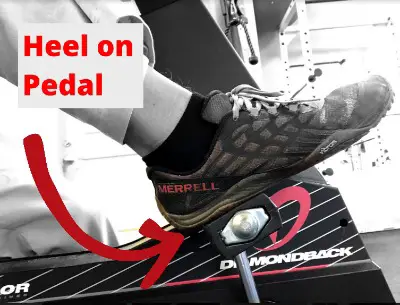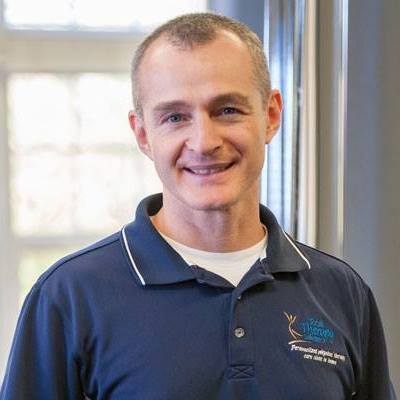Is a recumbent bike good for knee replacement?
Is a recumbent bike good for knee replacements?
Yes, the recumbent stationary bike is an excellent choice for total knee replacement recovery programs. I have been a physical therapist for nearly 20-years and I have never seen a clinic without a recumbent bike.
Some of the benefits of riding a recumbent bike after total knee replacement surgery include:
A large seat for comfort
A stable frame for getting on and off the bike safely
Convenient controls for resistance and intensity
Adjustable seat placement to improve knee range of motion
One of the most common pieces of exercise equipment used in the rehabilitation of a total knee replacement is a recumbent bike. With a wide variety of styles and quality, most clients will find the perfect bike to both fit their body and their wallet.
A recumbent bike may be used at home and in the physical therapy clinic after total knee replacement surgery.
In this article I will share ideas and information related to choosing the best knee recovery exercise bike for you.
What is the difference between a recumbent bike and an upright bike?
Both are stationary exercise bikes, but the recumbent bike has a larger seat with a back support usually not found on an upright bike. The other big difference is the recumbent bike has pedals positioned forward of the hip and the seat is significantly closer to the ground. A traditional upright stationary bike will have the seat higher from the ground and the pedals will be positioned more under the rider.
Where should you place your feet on the pedals?
An often overlooked part of riding a recumbent bike is foot placement on the pedals. Most bikes have a foot strap to help hold your foot in place, but it is often recommended to remove the straps when using a bike for rehabilitation after a total knee replacement. Once you remove the straps you will be able to position your foot closer to the heel on the surgical side while keeping the non-surgical foot placement closer to the ball of foot. In essence this allows you to shorten the surgical limb which results in less knee flexion during the revolution. As your range of motion improves you will balance both feet on the pedals equally and start to focus more on building endurance.

Using a recumbent bike to improve range of motion after a knee replacement.
Start by moving the seat as far back from the pedals as you can while still being able to complete a rocking or full rotation movement on the bike. As the knee range of motion improves you can start to slide the seat a little closer to the pedals. Some clients find it easier to pedal in reverse until a full revolution is achieved.
How soon after a total knee replacement can I use an exercise bike?
Some patients start using an exercise bike as soon as 1 day following surgery. The most common progression is to start with a gentle rocking motion to keep the knee moving but not put excessive stress through the knee. Then as the range of motion improves, the knee will naturally tolerate more of a full revolution until the foot is able to completely go around the motion without increasing pain in the knee. Some clients find it more comfortable to pedal in reverse during the first few sessions before trying to pedal in a forward motion.
What is the best recumbent bike after a total knee replacement?
There is a wide variety of brands and styles, but a couple key components and features you may be looking for include the following:
- Low profile or step through frame to make it easier when getting on and off the bike.
- Wide seat for a more comfortable riding experience.
- Arm rests to support your upper body while riding.
- A variable seat position.
- A wide base of support to prevent tipping.
Features Explained:
A low profile or step-through frame to make it easier when getting on and off the bike.
There are two primary bike designs. Some bikes have a high center console which can make getting on and off the bike more challenging. I always recommend a low center profile design, especially after knee surgery or a total knee replacement.
* Click image to check pricing on Amazon
Wide seat for a more comfortable riding experience.
Every seat is different and every human is different. Finding a comfortable seat is a challenge but I would recommend you look at seat width to determine how wide of a seat you want.
* Click image to check pricing on Amazon
Arm rests to support your upper body while riding.
Many clients who have had a total knee replacement also have symptoms associated with low back pain. Having comfortable armrests can be a huge benefit to reducing your low back pain and prolonging the time you are able to ride your new bike. Some bikes even have flip up arm rests which make getting on and off the seat much easier.

A variable seat position.
During the first couple sessions on your new recumbent bike you will be changing the seat position frequently. You will start further back from the pedals then every minute or two you may want to slide your seat a little closer. I would recommend avoiding adjustable seats that require you to stop pedaling and get off the bike to adjust the seat. You want a seat that can slide while you are seated.
* Click image to check pricing on Amazon
A wide base of support to prevent tipping.
One of the most common causes of injury in a physical therapy clinic occurs when a client is getting on or off a recumbent bike and experiences a loss of balance. Often the client and bike will tip over and fall to the ground. Choosing a bike with a wide base of support can significantly reduce the chances of the bike tipping while you are getting on and off the bike.
* Click image to check pricing on Amazon
3 Common Exercises Performed on a Recumbent Bike During Physical Therapy
- A common calf stretch
- A rolling pin self massage
- Range of motion improvement in flexion and extension
Using a recumbent bike to stretch your calf
A common calf stretch can be performed while on the recumbent bike. Simply place the ball of your foot on the pedal and while the pedal is at the farthest point in the rotation away from your seat you can allow the heal to drop down while pressing the knee into extension. As with most stretches, the intensity should be comfortable and the duration could range between 30 to 60-seconds for each repetition.
Rolling pin self massage
The rolling pin self massage has been transformational for so many individuals after a total knee replacement. It is inexpensive, convenient, and super easy. Most clients already have a rolling around the house. It can be wood, metal, or marbal. Anything that will role and glide over your muscles will work. In this video I show you how to use the rolling pin to massage the thigh while improving knee flexion.
Using a recumbent bike to improve range of motion after a total knee replacement
Most clients find a recumbent bike is an easy way to improve range of motion in both extension as well as flexion. To improve flexion you would slowly move the seat closer to the pedals while controlling the intensity of your surgical leg stretch with the non-surgical leg. To improve the extension you would move the seat further back away from the pedals allowing the surgical knee to fully extend and reach toward the pedal and the furthest part of the rotation.
How often should I ride a recumbent bike after a total knee replacement?
As your endurance and strength improves following your knee surgery you will find that your ability to ride your recumbent bike for longer durations at higher intesities will also improve. For many clients we find that 3 to 5 short durations sessions a day is plenty during the first 6 weeks of recovery. These short duration sessions might be 2 to 5 minutes. We typically recommend you stop before feeling like you have to stop. We recommend a 2 or 3 level of intensity out of 10.
Below are some common recumbent bikes used to rehabilitate a total knee replacement while at home between physical therapy sessions.

Anthony Maritato, PT
Physical Therapist
Anthony Maritato, PT has been a licensed physical therapist and private practice owner since 2006. Ohio license #PT011602.
Anthony has been passionate about helping patients recover from total knee replacement surgery as well as rotator cuff repair surgery.






